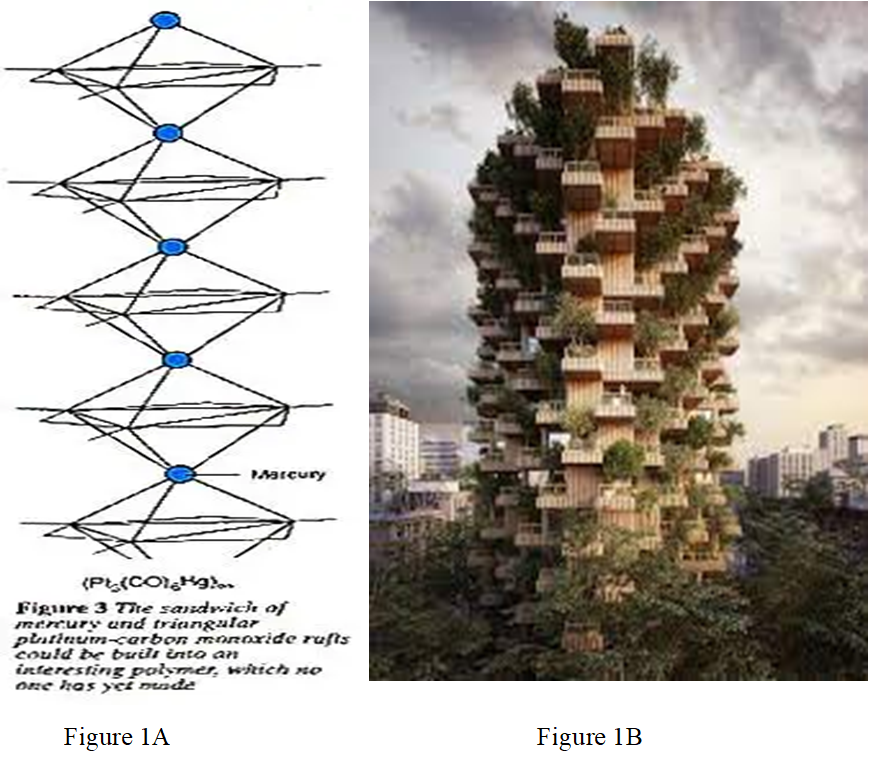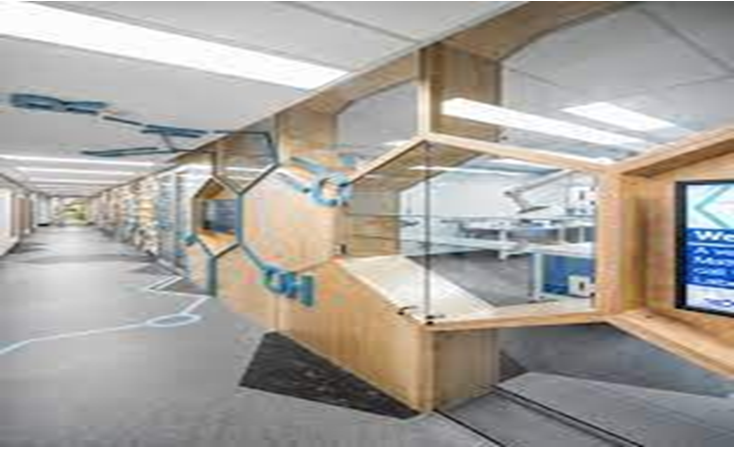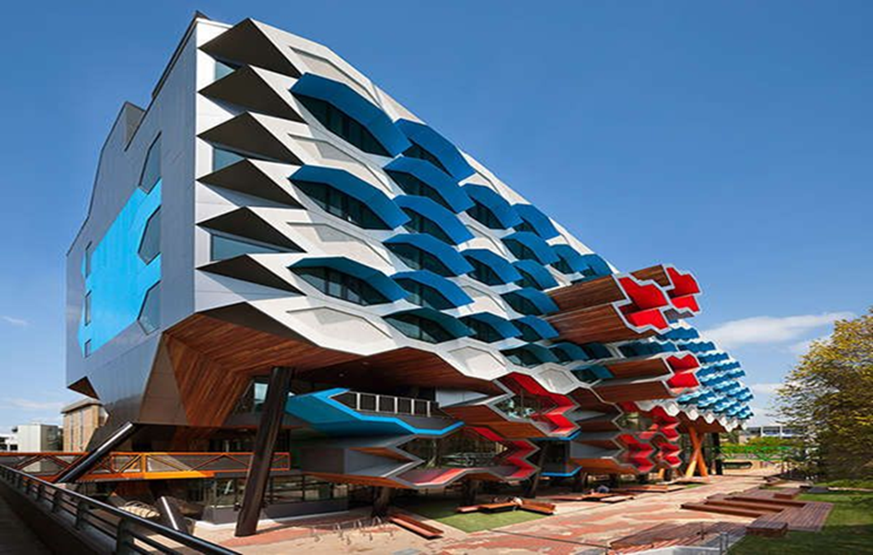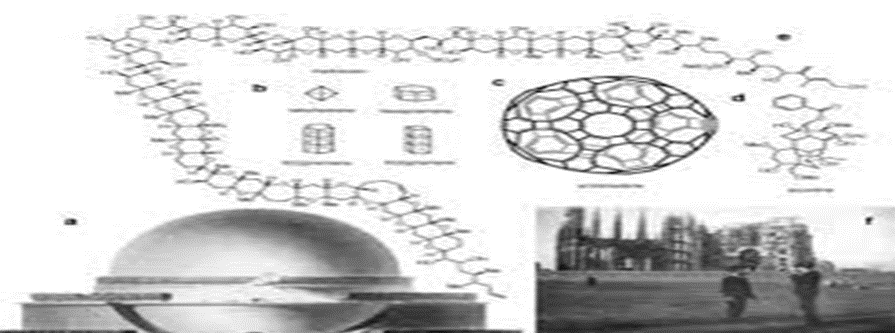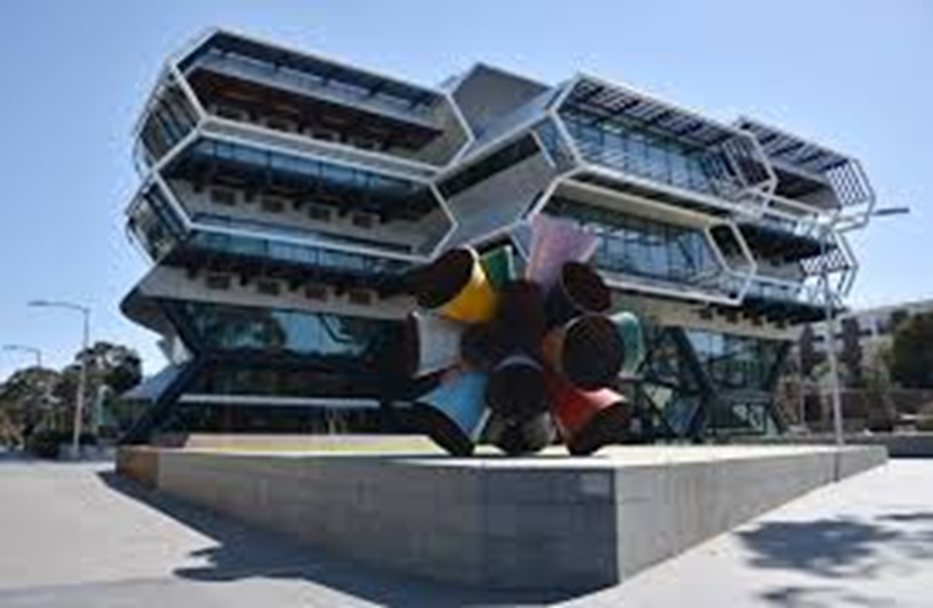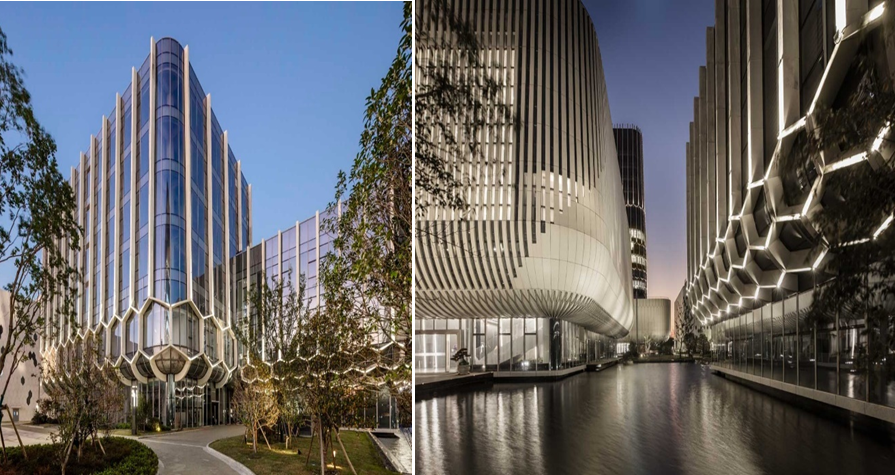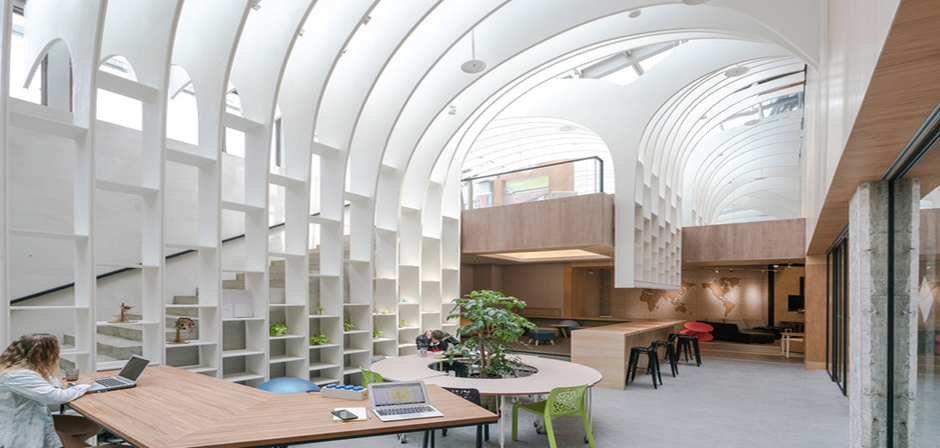Chemistry and Architecture: Where the Handshakes are
- Evelyn L. A. Allu-Kangkum
- Mary Luka-Anzah Kagoro
- Juliet D. Dodo
- Lokta D. Solomon
- Amina Mika Lohdip
- 562-571
- May 14, 2024
- Architecture
Chemistry and Architecture: Where the Handshakes Are
*Evelyn L. A. Allu-Kangkum1, Mary Luka-Anzah Kagoro2, Juliet D. Dodo2, Lokta D. Solomon2 & Amina Mika Lohdip2.
1Department of Architecture, University of Jos, Nigeria.
2Department of Chemistry, University of Jos, Nigeria
*Corresponding Author
DOI: https://doi.org/10.51244/IJRSI.2024.1104041
Received: 27 March 2024; Revised: 12 April 2024; Accepted: 15 April 2024; Published: 14 May 2024
ABSTRACT
Scientific collaboration is an important aspect of the advancement of modern science development. Various topics and areas in research collaborations have been associated with creativity and science and such handshakes have great impact on interdisciplinary or multidisciplinary research output. Therefore, this theoretical discourse promotes a multidisciplinary research handshake across disciplines and in this case between architecture and chemistry. Such interdisciplinary research handshake has been opined to be highly impactful, innovative, and inspirational, are catalysts for new developments in both fields that could be coined as architecturalchem razzmatazz and also referred to as chemarchitecture. Yet, there are a few challenges noted therein which include modalities for collaborators, poorly understood research topics and some researchers view collaborations as working on single topics by researchers within a discipline.
Keywords: architecture; architecturalchem; chemistry; chemarchitecture; collaborations.
INTRODUCTION
Architecture and chemistry are two science disciplines that must work hand-in-hand and this is the reason chemistry is a requirement for the study of architecture. This is because the act of design and construction requires the most detailed; information, and insights of pre and fore knowledge for its creative actions. Chemistry is one of the core subjects that help architects become knowledgeable about the materials, and their components, and make wise decisions on materials specifications (Cronin, 2011; Kim, 2022). The handshake between architecture and chemistry is an interesting subject in science advancement that has received little research attention (Kim, 2022). This theoretical discourse aims at adding to the subject and bridging the gap for further research work between the two disciplines through the lens of architecturalchem razzmatazz coined for the purpose of this study. Architecturalchem razzmatazz highlights the known and the salient opportunities that abound in the handshake between architecture and chemistry. These include molecular architecture, Biophilic Design, Conservation, design specifications, Energy Efficiency, Environmental Impact, Materials Science and Building Materials, Preservation and Restoration, Safety, and Sustainability. In furtherance to these, other handshakes are noted in the works of architect Magnus Larrson who developed molecular architecture into chemarchitecture, where chemical techniques are employed to produce novel and functional architectural structures (Heather, 2011). These opportunities and the challenges therein are highlighted in the proceeding sections.
LITERATURE REVIEW
Molecular architecture: Recent developments in molecular architecture through synthetic methods of polymer chain and its physical environment and supramolecular chemistry have led to innovations in well-defined stable structures. Thus, the new techniques have helped to advance the field of molecular architecture (Moore, 1996; Spakowitz, and Muthukumar, 2012). This development highlights the interplay between molecular architecture which has led to design specifications favouring the ordering of molecular materials. Thus, molecular structure in chemistry holds a key to uncovering Nature’s intricate design process and are likely to produce architectural designs that are structurally stable and have less negative detrimental environmental impacts. Figures 1(A & B) and 2 show structural form mimicked from chemical compounds and the integration of chemistry in interior design spaces, respectively. Figure 3 is the Science Building in La Trobe University in Australia, the building’s concept was inspired by molecular architecture. Architects have built upon molecular architecture to develop chemarchitecture using compound chemical techniques to produce futuristic architectural sustainable designs that are simply a razzmatazz (Allu-Kangkum, 2023) see Figures 3 to 6.
Figure 1A: Chemistry inspired structure – Scientific sandwich of mercury and triangular platinum-carbon monoxide rafts. Figure 1B: Example Toronto Tower, Canada by Studio Precht.
Source 1A: Hoofman, 1990 https://www.newscientist.com/article/mg12817434-500/
Source 1B: https://parametric-architecture.com/the-toronto-tree-tower-by-chris-precht/
Figure 2: The chemical composition inspired the design feature of the hexagonal pattern in the hallway of the laboratory.
Source: https://www.pinterest.com/pin/the-chemical-composition-inspired-the-design-feature-of-the-hexagonal-pattern-in-the-hallway-of-the–4996249572922757/ (22/02/2024)
Figure 3: Melbourne’s Molecule Shaped Science Building.
Source: https://www.pinterest.com/pin/449445237784751075/
Figure 4: The Interplay between Chemistry and Architecture in Our World.
Source: Kim, 2021 https://www.globalstemyouthjournal.org/post/the-interplay-between-chemistry-and-architecture-in-our-world
Figure 5: Green Chemical Futures Building Monash University, Clayton.
Source: Deutscher, 2018 https://en.m.wikipedia.org/wiki/File:Green Chemical Futures Building Monash University, Clayton. %2842860792950%29.jpg
Figure 6: Ascentage Pharma Campus – Chemistry Inspires Architecture.
Source: Oli Architecture, https://www.theplan.it/eng/architecture/ascentage-pharma-campus-chemistry-inspires-architecture
Protocell Technology: this innovation started with the use of plastic in the 1960s, at the time chemistry provided the channel for innovative new building material that were adaptive and applied to architecture especially in interiors and product design (Khan, 2011). The initial concern was chemical adaptive innovation to responsive architecture would address sustainable energy resource but this concern was surmounted via sustainable processes of the elastic potential of synthetic rubbers (Khan, 2011; Onissiphotou, 2022). Figures 7 and 8 depict products of protocell technology used for elastic responsive architectural screens and surfaces.
Figure 7: Plastic and elastic architectural screens
Source: Khan (2011).
Figure 8: Plastic and elastic architectural surfaces
Source: Khan (2011).
Biophilic Design: Biophilic design is a concept used by the architect in the built environment to increase occupants’ connection to the natural environment through passive strategies using direct nature and indirect nature, orientation, space use place conditions and chemical reactions (Allu-Kangkum, 2023). This is a relatively new area that aligns with the third agenda of the Sustainable Development Goals to promote health and well-being using natural materials (Zhong et al, 2022). Chemistry informs and provide the compound composition of the natural materials used that include; sunlight, plants, wood, stone, and clay. Thus, making it easier for architects to specify the use and application such natural resource in their design and being mindful of the atmospheric chemical reactions with the building components as shown in Figure 9.
Figure 9: Use natural materials – plants, stone, wood, plants and clay for indoor air quality.
Source: Schires, 2020.
Conservation Preservation and Restoration: During conservation works the knowledge of chemistry guides the architect on the choice of cleaning agents, and the type of protective coatings and repair materials suitable for heritage structures (Komornicki, 2015; Wiesinger & Schreiner, 2015). Also, architects collaborate with chemists to analyse the carbon nature and other chemical combinations in historical buildings’ materials (Komornicki, 2015; Liang, et al., 2023). This handshake does help in the conservation, restoration, and preservation work across the different types of design intentions in this regard.
Building Materials: Chemistry exposes the architect to the detailed chemical connections between materials and atmospheric reactions such as oxidation, pollution, acidic rain, snow, corrosion, and other atmospheric effects on building materials (Kim, 2022). The knowledge acquired further broadens the spectrum of material options that can be used and or created through research collaborations on chemical reactions and suitability through various research handshakes across these disciplines (Heather, 2011; Kim, 2021). Some materials commonly affected by chemical composition are acoustic materials, concrete, glass, solar panels, and polymers. and composites, lighting panels, and others.
Whilst architecture is directly involved in creating the design, providing specifications, and enhancing health and well-being in construction, chemistry indirectly plays its role behind the scenes providing the formula which directs the choice for safer, stable and suitable materials for design adaption and construction.
Energy Efficiency in buildings: Energy efficient buildings are product of energy efficient building materials and construction deployed by a combine team of the architects, chemical industry, Building Information Modelling (BIM) software, engineers, and contractors to visualize, simulate, and analyse the energy performance of a building before construction begins (Onissiphorou, 2022). To accelerate the development and the deployment of energy efficient building solutions which have lower emissions and energy supply, the Chemical Industry is a key partner and supplier of materials science and solutions that contribute towards innovations that must be engaged with to achieve energy efficiency and sustainability in buildings (Komornicki, 2015; Qin et al., 2021; Onissiphorou, 2022).
Environmental Impact: The mixture of gases and some reactive particles undergo complex chemical reactions in the atmosphere to form air pollutants such as the ozone. Other air pollutants can be solid, liquid or gas and come from natural and man-made sources; one of the biggest contributors to air pollution today is residential burning of fuels which causes building materials downgrade on facades and also leading to climatic changes (Allu, 2014, Serio, et al., 2015). Therefore, a detailed understanding of these pollutants and their chemistry is important for interpreting health effects, emissions from buildings, and developing pollution-reducing design and construction technologies to save guard the environment.
Safety and Sustainability: Chemical Safety for Sustainability (CSS) Research Program is focused on combatting the pressing environmental and health challenges due to the lack of sufficient information on chemicals available and needed to make informed, risk-based decisions (US Environmental Protection Agency (USEPA, 2024). This is particularly so with regards to architectural design specifications and the construction industry in general. Many times, the building materials and components do not carry the chemical composition of the product and their level of compliance on any sustainable rating system particularly in Nigeria and other context of similar happenings.
Challenges in scientific collaborations: The importance of collaborations cannot be overemphasized but the concern is perception of what collaboration does and does not entail. The challenge for collaboration is that it is perceived to be limited to collaborations within same discipline or within a single topic but the scientific research collaborations should be interdisciplinary, impactful and across topics (Bansal, 2019; Zeng, et al., 2022). Another challenge is opined to be that of inadequate availability of research funds in terms sourcing the funds for conducting the research and or how to share the cost of publication and sometimes logistics (Rensburg, et al., 2015; Zeng, et al., 2022). Collaborations across borders is also limited, due to scarcity of funds, lack of trust in the capacity of others researchers across borders, and travel barriers due to visas and other restrictions (Matthews, et al., 2020). Surmounting barriers to international collaboration would improve the scientific innovations necessary for global efforts to address futuristic contextual developments addressing sustainable development in all spheres of life globally.
CONCLUSION
Firstly, understanding the chemical science behind the building materials and components used by architects would enhance the creation of buildings that are safe and structurally sound. Secondly, chemistry supports architects to create buildings that are more environmentally friendly by choosing sustainable materials, design, and other available sustainable techniques. Thirdly, the knowledge of chemistry can help architects create more aesthetically and provide good indoor air quality buildings by choosing the right chemically combined materials, paints, and finishes for their design specifications, restoration, and conservation projects. Fourthly, the perception that collaborations or handshakes are tailored towards researchers within the same discipline rather than interdisciplinary, especially amongst developing economies must be discouraged in favour of interdisciplinary handshakes. Finally, collaborative handshakes like the architecturalchem razzmatazz are for the good of research, science, innovation, and sustainable development.
REFERENCES
- Allu, E. L. A. (2014). Climate change and buildings in Nigeria: A search for mitigation and adaptation framework for residential buildings design guide. PhD Thesis submitted to Leicester School of Architecture, De Montfort University (DMU), Leicester – England https://www.dora.dmu.ac.uk/browse?type=author&value=Allu,%20Evelyn.
- Allu-Kangkum, E. L. A. (2023). Architecture and the razzmatazz of its interconnectivity: the rendezvous therein. University of Jos 105th Inaugural Lecture Series 1- 64. ISBN: 978-978-797-482-7.
- Allu-Kangkum, E. L. A. (2023). The role of sustainable architecture in human health and well-being: A Review. International Journal of Research and Scientific Innovation (IJRSI). October 2023(X), 16 – 22 ISSN No. 2321-2705 DOI://doi.org/10.51244/IJRSI.2023.101003.
- Bansal, S. Mahendiratta, S. Kumar, S. Sarma, P. Prakash, A. & Medhi, B. (2019). Collaborative research in modern era: Need and challenges Indian J Pharmacology. 51(3):137-139. doi: 10.4103/ijp.IJP_394_19. PMID: 31391680; PMCID: PMC6644188.
- Cronin, L. (2011). Defining new architectural design principles with ‘Living’ inorganic materials. Architectural Design, 81, 34-43.
- Heather, J. M. (2011). Chemistry and Architecture-Chemarchitecture? https://blogs.ucl.ac.uk/events/2011/06/07/chemistry-and-achitecture/.
- Khan, O. (2023). An architectural chemistry. Architectural Design, 81(2), 50-59. https://doi.org/ 10.1002/ad.1212
- Kim, S. Y. (2021). The Interplay Between Chemistry and Architecture in Our World. https://www.globalstemyouthjournal.org/post/the-interplay-between-chemistry-and-architecture-in-our-world.
- Matthews, K. R. W. Yang, E. Lewis, S. W. Vaidyanathan, B. R. & Gorman, M. (2020). International scientific collaborative activities and barriers to them in eight societies, Accountability in Research, 27(8), 477-495, DOI:10.1080/08989621.2020.1774373.
- Komornicki, J. (2015). Innovative Chemistry Builds Energy Efficiency into Smart Cities. https://communities.acs.org/t5/GCI-Nexus-Blog/Innovative-Chemistry-Builds-Energy-Efficiency-into-Smart-Cities/ba-p/15963 (Accessed 23/02/2023).
- Liang R, Zheng X, Wang P-H, Liang J, & Hu L. (2023). Research Progress of Carbon-Neutral Design for Buildings. Energies. 2023; 16(16):5929. https://doi.org/10.3390/en16165929.
- Moore, J. S. (1996). Molecular architecture and supramolecular chemistry. Current Opinion in Solid State and Materials Science,1(6), 777-788, ISSN 1359-0286, https://doi.org/10.1016/S1359-0286(96)80102-1.
- Onissiphotou, K. (2022). Becoming more energy efficient in chemical manufacturing https://www.reagent.co.uk/blog/becoming-more-energy-efficient-in-chemical-manufacturing/ (Accessed 22/02/2024).
- Qin, Z., Li, M., Flohn, J., & Hu, Y. (2021). Thermal management materials for energy-efficient and sustainable future buildings. Chemical Communications, 57, 12236-12253.
- Rensburg., I. Motala, S. & David, S. A. (2015). Opportunities and challenges for research collaboration among the BRICS nations. Compare. 45:814–818.
- Deutscher, R. (2018). Green Chemical Futures Building Monash University, Clayton. https://en.m.wikipedia.org/wiki/File:Green_Chemical_Futures_Building_Monash_University,_Clayton._% 2842860792950%29.jpg (Accessed 23/02/2024).
- Schires., M. (2020). How Designing for Air Quality May Determine the Outcome of Your Meeting. https://www.archdaily.com/916314/how-designing-for-air-quality-may-determine-the-outcome-of-your-meeting (Accessed 23/02/2024).
- Serio, N. Moyano, D. F. Rotello, V. M. & Levine, M. (2015). Array-based detection of persistent organic pollutants via cyclodextrin promoted energy transfer. Journal of Chemical Communication, 58, https://pubs.rsc.org/en/content/articlelanding/2015/cc/c5cc04153h.
- Spakowitz, A. J. & Muthukumar, M. (2012). Polymer Science: A Comprehensive Reference, Elsevier, 231-245. ISBN 9780080878621. https://doi.org/10.1016/B978-0-444-53349-4.00236-3.
- US Environmental Protection Agency (USEPA), (2024). About the Chemical Safety for Sustainability Research Program. https://www.epa.gov/aboutepa/about-chemical-safety-sustainability-research-program#:~:text=EPA’s%20Chemical%20Safety%20for%20Sustainability,informed%2C%20risk%2Dbased%20 decisions (Accessed 23/02/2024).
- Wiesinger, R. and Schreiner, M. (2015). Chemistry for cultural heritage. Heritage Science 3(35), 1- 2. https://doi.org/10.1186/s40494-015-0064-z.
- Zeng, A. Fan, Y. Di, Z. & Wang Y. (2022). Impactful scientists have higher tendency to involve collaborators in new topics. Applied Physical Social Sciences, 119(33), 1 – 9. https://doi.org/10.1073/pnas.2207436119.
- Zhong, W. Schroder, T. & Bekkering, J. (2022). Biophilic Design in Architecture and its Contributions to Health, Well-Being, and Sustainability: A Critical Review. Frontiers of Architectural Research 11(2022), 114-141.

